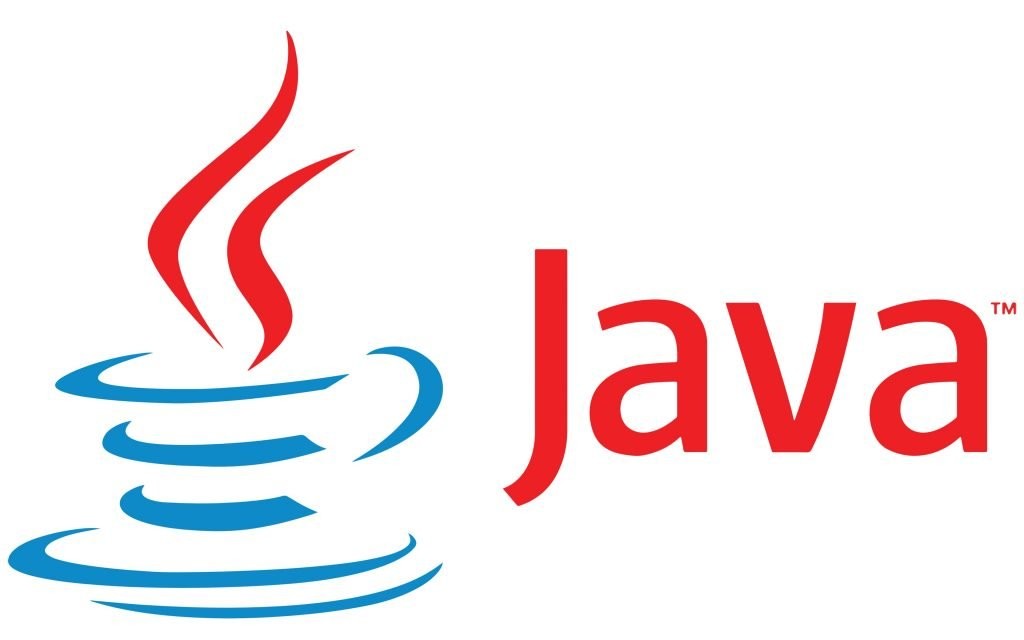Last Updated on August 27, 2024
Java’s ByteStream classes are fundamental components of the java.io package, providing a robust framework for handling input and output operations at the byte level.
These classes are essential for developers working with raw binary data, file systems, and network communications.
In this comprehensive article, we’ll explore the intricacies of ByteStream classes, their hierarchy, key functionalities, and practical applications in Java programming.
ByteStreams operate on 8-bit bytes, making them ideal for working with binary data such as images, audio files, and network protocols. Understanding these classes is crucial for any Java developer looking to master I/O operations and build efficient, data-intensive applications.
The InputStream and OutputStream abstract classes
At the core of Java’s ByteStream hierarchy are two abstract classes: InputStream and OutputStream. These classes serve as the foundation for all byte-oriented I/O operations in Java.
InputStream
This abstract class is the superclass of all classes representing an input stream of bytes. It defines methods for reading bytes, skipping bytes, and closing the stream.
Key methods:
- int read(): Reads a single byte
- int read(byte[] b): Reads bytes into an array
- void close(): Closes the stream
OutputStream
This abstract class is the superclass of all classes representing an output stream of bytes. It defines methods for writing bytes and closing the stream.
Key methods:
- void write(int b): Writes a single byte
- void write(byte[] b): Writes an array of bytes
- void flush(): Flushes the stream
- void close(): Closes the stream
Key ByteStream Classes
FileInputStream and FileOutputStream
FileInputStream
Is a class that obtains input bytes from a file in the file system. It’s used for reading raw byte-oriented data from files.
Example of reading a file byte by byte:
try (FileInputStream fis = new FileInputStream("example.txt")) {
int data;
while ((data = fis.read()) != -1) {
System.out.print((char) data);
}
} catch (IOException e) {
e.printStackTrace();
}Example of reading a file into a byte array:
try (FileInputStream fis = new FileInputStream("example.txt")) {
byte[] buffer = new byte[1024];
int bytesRead;
while ((bytesRead = fis.read(buffer)) != -1) {
System.out.write(buffer, 0, bytesRead);
}
} catch (IOException e) {
e.printStackTrace();
}FileOutputStream
Is a class used for writing byte-oriented data to a file. It can create a new file or overwrite an existing file.
Example of writing a string to a file:
try (FileOutputStream fos = new FileOutputStream("output.txt")) {
String data = "Hello, FileOutputStream!";
byte[] byteArray = data.getBytes();
fos.write(byteArray);
} catch (IOException e) {
e.printStackTrace();
}Example of appending data to an existing file:
try (FileOutputStream fos = new FileOutputStream("output.txt", true)) {
String data = "\nThis is appended text.";
byte[] byteArray = data.getBytes();
fos.write(byteArray);
} catch (IOException e) {
e.printStackTrace();
}ByteArrayInputStream and ByteArrayOutputStream
Two classes in Java for working with byte arrays in memory. They allow you to treat byte arrays as streams, which can be particularly helpful when you need to process data in memory or when interfacing with other stream-based APIs.
ByteArrayInputStream
Is a class that allows you to read from a byte array as if it were an input stream. It’s particularly useful when you have data in a byte array and need to process it using methods that expect an input stream.
byte[] data = {65, 66, 67, 68, 69}; // ASCII values for ABCDE
try (ByteArrayInputStream bais = new ByteArrayInputStream(data)) {
int byteData;
while ((byteData = bais.read()) != -1) {
System.out.print((char) byteData);
}
}
// Output: ABCDEByteArrayOutputStream
Is a class that implements an output stream in which the data is written into a byte array. The buffer automatically grows as data is written to it.
try (ByteArrayOutputStream baos = new ByteArrayOutputStream()) {
baos.write("Hello".getBytes());
baos.write(", ".getBytes());
baos.write("ByteArrayOutputStream!".getBytes());
byte[] byteArray = baos.toByteArray();
System.out.println(new String(byteArray));
// You can also get the string directly
System.out.println(baos.toString());
}
// Output:
// Hello, ByteArrayOutputStream!
// Hello, ByteArrayOutputStream!Use cases and advantages:
- Memory-based operations: When you need to perform I/O operations without involving external resources like files or network connections.
- Testing: These classes are great for unit testing I/O-based code without actually reading from or writing to files.
- Data transformation: When you need to transform data that’s in a byte array format or prepare data to be sent over a network.
- Interfacing with legacy APIs: Some APIs might expect InputStream or OutputStream objects. These classes allow you to work with byte arrays while still interfacing with such APIs.
- Performance: For small amounts of data, working in memory can be faster than working with files.
BufferedInputStream and BufferedOutputStream
Are classes in Java’s I/O package that provide buffering capabilities to input and output streams. These classes can significantly improve the performance of I/O operations by reducing the number of calls to the underlying system.
BufferedInputStream
BufferedInputStream adds functionality to another input stream, namely the ability to buffer the input and to support the mark and reset methods. It reads data from a specified InputStream into a buffer, which reduces the number of read operations from the underlying input source.
try (FileInputStream fis = new FileInputStream("input.txt");
BufferedInputStream bis = new BufferedInputStream(fis)) {
int data;
while ((data = bis.read()) != -1) {
System.out.print((char) data);
}
} catch (IOException e) {
e.printStackTrace();
}BufferedOutputStream
BufferedOutputStream adds functionality to another output stream, namely the ability to buffer the output. It writes data to a buffer, and the buffer is written to the underlying output stream only when it’s full, when flush() is called, or when the stream is closed.
try (FileOutputStream fos = new FileOutputStream("output.txt");
BufferedOutputStream bos = new BufferedOutputStream(fos)) {
String data = "Hello, BufferedOutputStream!";
bos.write(data.getBytes());
// The data might not be written to the file until the stream is closed or flushed
bos.flush(); // Ensures the data is written to the file
} catch (IOException e) {
e.printStackTrace();
}Benefits and use cases:
- Improved Performance: By reducing the number of I/O operations, these classes can significantly improve the performance of your application, especially when dealing with large amounts of data.
- Convenience: They provide a higher-level interface for I/O operations, making your code cleaner and easier to read.
- Support for mark() and reset(): BufferedInputStream supports these operations, which can be useful in certain scenarios like parsing.
- Efficient Network I/O: When working with network streams, buffering can reduce the number of network calls, improving efficiency.
DataInputStream and DataOutputStream
DataInputStream and DataOutputStream are classes in Java that allow you to read and write Java primitive data types and strings in a machine-independent way.
These classes provide methods to read and write data that can be transferred between different platforms without concerns about byte ordering or data representation.
DataInputStream
DataInputStream is a class that lets an application read primitive Java data types from an underlying input stream in a machine-independent way.
try (FileInputStream fis = new FileInputStream("data.bin");
DataInputStream dis = new DataInputStream(fis)) {
int intValue = dis.readInt();
double doubleValue = dis.readDouble();
String stringValue = dis.readUTF();
System.out.println("Int: " + intValue);
System.out.println("Double: " + doubleValue);
System.out.println("String: " + stringValue);
} catch (IOException e) {
e.printStackTrace();
}DataOutputStream
DataOutputStream is a class that lets an application write primitive Java data types to an output stream in a portable way.
try (FileOutputStream fos = new FileOutputStream("data.bin");
DataOutputStream dos = new DataOutputStream(fos)) {
dos.writeInt(42);
dos.writeDouble(3.14159);
dos.writeUTF("Hello, DataOutputStream!");
System.out.println("Data written successfully.");
} catch (IOException e) {
e.printStackTrace();
}Use cases and advantages:
- Cross-platform data exchange: These classes ensure that data written on one platform can be correctly read on another, regardless of differences in byte ordering or data representation.
- Binary file formats: When you need to create custom binary file formats, these classes provide a convenient way to write and read structured data.
- Network protocols: Many network protocols require sending structured data. DataInputStream and DataOutputStream can be used to read and write this data easily.
- Serialization: While not as flexible as full object serialization, these classes provide a simple way to serialize primitive data and strings
ObjectInputStream and ObjectOutputStream
ObjectInputStream and ObjectOutputStream are classes in Java that provide high-level object serialization and deserialization functionality. They allow you to convert Java objects into a byte stream and vice versa, which is useful for persisting objects or transmitting them over a network.
ObjectInputStream
ObjectInputStream is used for deserializing objects previously serialized with ObjectOutputStream. It reconstructs objects from a stream of bytes.
class Person implements Serializable {
private static final long serialVersionUID = 1L;
private String name;
private int age;
public Person(String name, int age) {
this.name = name;
this.age = age;
}
@Override
public String toString() {
return "Person{name='" + name + "', age=" + age + "}";
}
}
try (FileInputStream fis = new FileInputStream("person.ser");
ObjectInputStream ois = new ObjectInputStream(fis)) {
Person deserializedPerson = (Person) ois.readObject();
System.out.println("Deserialized person: " + deserializedPerson);
} catch (IOException | ClassNotFoundException e) {
e.printStackTrace();
}ObjectOutputStream
ObjectOutputStream is used for serializing objects into a byte stream. It converts Java objects into a stream of bytes that can be saved to a file or sent over a network.
class Person implements Serializable {
private static final long serialVersionUID = 1L;
private String name;
private int age;
public Person(String name, int age) {
this.name = name;
this.age = age;
}
@Override
public String toString() {
return "Person{name='" + name + "', age=" + age + "}";
}
}
try (FileOutputStream fos = new FileOutputStream("object.ser");
ObjectOutputStream oos = new ObjectOutputStream(fos)) {
Person person = new Person("Alice", 30);
oos.writeObject(person);
System.out.println("Object has been serialized");
} catch (IOException e) {
e.printStackTrace();
}Use cases and advantages:
- Object persistence: Easily save objects to files and load them later.
- Deep copying: Create deep copies of objects by serializing and then deserializing them.
- Network transmission: Send complex object structures over a network.
- Caching: Store computed results for later use.
Conclusion
Java’s ByteStream classes provide a powerful and flexible framework for handling binary data in various scenarios.
From basic file operations to complex network communications and data processing, these classes form the backbone of Java’s I/O capabilities. By understanding the different ByteStream classes, their proper usage, and best practices, developers can create efficient and robust applications that handle data with ease.
As we continue to work with ByteStream classes, choose the appropriate class for your specific needs, implement proper exception handling, and consider performance optimizations when dealing with large amounts of data.

